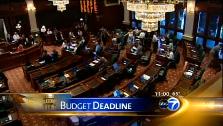Politico ignores Roberts, Alito record in claiming Ricci "could tarnish Sotomayor" A June 30 Politico article about the Supreme Court's decision in Ricci v. DeStefano -- which reversed by a 5-4 margin a decision joined by Supreme Court nominee Sonia Sotomayor -- promoted the myth that a Supreme Court reversal is somehow unusual. The article bore the headline, "Ruling could tarnish Sotomayor." The article itself, by staff writer Josh Gerstein, asserted that the Supreme Court's action "seemed to deal a blow to President Barack Obama's pending nominee for the high court, Judge Sonia Sotomayor." At no point in the article did Gerstein note that the Supreme Court reversed Justice Samuel Alito on at least four occasions when he was an appellate court judge and that the court also reversed a decision Chief Justice John Roberts joined as an appellate court judge. Gerstein also did not note that it is not unusual for the Supreme Court to reverse federal appellate court decisions. In his book, The Nine: Inside the Secret World of the Supreme Court (Doubleday, 2007), New Yorker staff writer and CNN senior legal analyst Jeffrey Toobin wrote that, in 1992, O'Connor had "excoriated" the "logic, approach, and conclusions" of her eventual successor, Alito, in her opinion for the abortion-rights case, Planned Parenthood v. Casey. Moreover, Alito identified four more reversals -- in each of which O'Connor voted with the majority reversing Alito -- in his Supreme Court nomination questionnaire: - Rompilla v. Horn, 355 F.3d 233 (3d Cir. 2004), cert. granted 542 U.S. 966, and rev'd 125 S.Ct. 2456 (2005)
- Thomas v. Comm'r of Soc. Sec., 294 F.3d 568 (3d Cir. 2002), cert. granted 537 U.S. 1187, and rev'd 540 U.S. 20 (2003)
- Coss v. Lackawanna County D.A., 204 F.3d 453 (3d Cir. 2000) (en banc), cert. granted 531 U.S. 923 (2000), and rev'd 532 U.S. 394 (2001)
- Fiore v. White, 149 F.3d 221 (3d Cir. 1998), cert. granted 526 U.S. 1038, question certified 528 U.S. 23 (1999), certified question answered 562 Pa. 634 (2000), and rev'd 531 U.S. 225 (2001)
Alito was reversed unanimously in Thomas. Additionally, as an appeals court judge, Roberts was a member of a three-judge panel of the U.S. Court of Appeals for the District of Columbia Circuit, which, in its July 2005 unanimous ruling in Hamdan v. Rumsfeld, allowed a military commission to try Salim Ahmed Hamdan, a Guantánamo Bay detainee. Roberts was confirmed as chief justice several months later, in September 2005. Then, in 2006, the Supreme Court reversed the circuit court's decision on a 5-3 ruling. Moreover, data compiled by SCOTUSblog since 2004 show that the Supreme Court has reversed more than 67 percent of the federal appeals court cases it considered each year, except 2007, when it reversed federal appeals court cases 61 percent of the time. During the term that concluded June 29, the Supreme Court reversed outright 74.7 percent of the federal appellate cases it considered. From the June 30 Politico article: In awarding a victory Monday to a group of white firefighters in New Haven who argued that they were denied promotions on account of their race, the U.S. Supreme Court also seemed to deal a blow to President Barack Obama's pending nominee for the high court, Judge Sonia Sotomayor, who earlier had ruled against the firefighters. Justice Anthony Kennedy, writing for a court split 5-4 along ideological lines, reversed an appeals court ruling Sotomayor joined last year that rejected a claim that the City of New Haven discriminated against white firefighters by throwing out a promotional exam after all the African-American firefighters who took it scored too poorly to be promoted. "Whatever the city's ultimate aim -- however well intentioned or benevolent it might have seemed -- the city made its employment decision because of race. The city rejected the test results solely because the higher-scoring candidates were white," Kennedy wrote on behalf of Chief Justice John Roberts and Justices Antonin Scalia, Clarence Thomas and Samuel Alito. |













